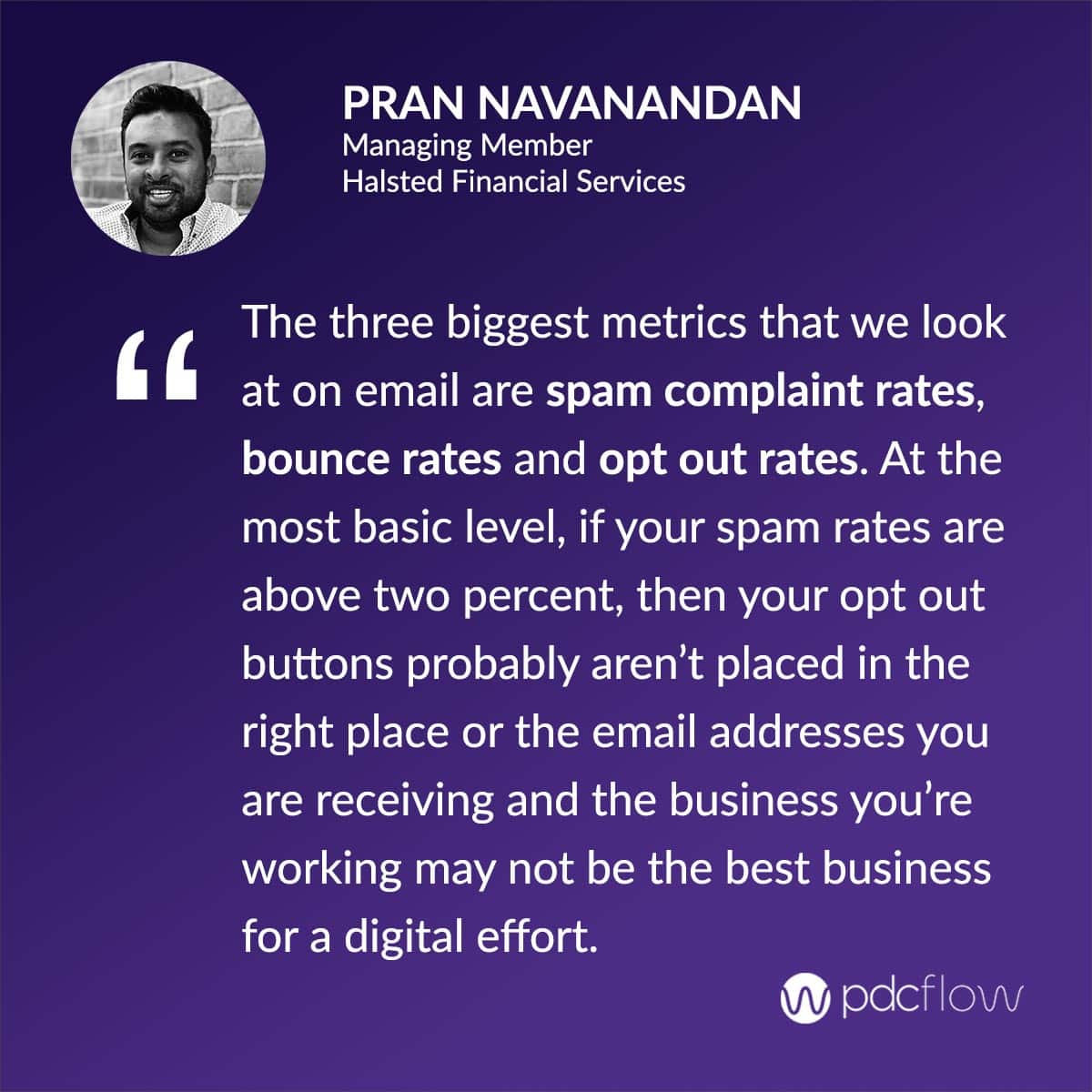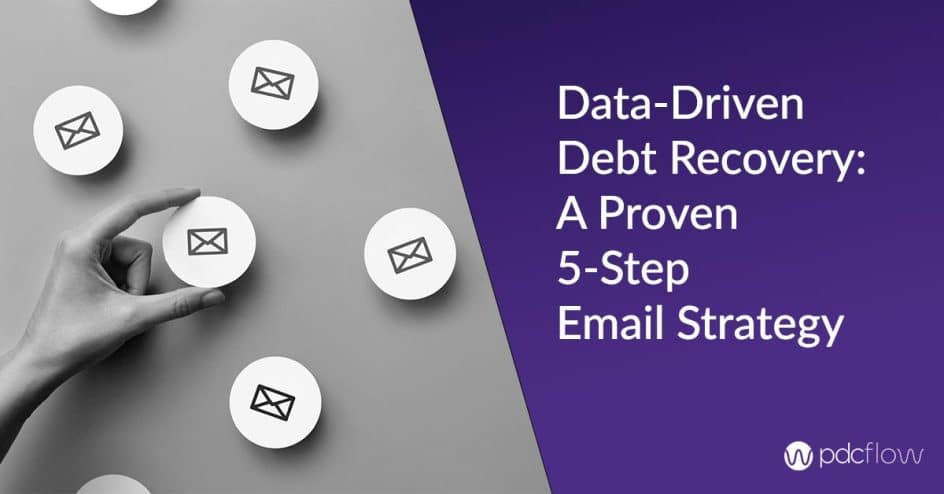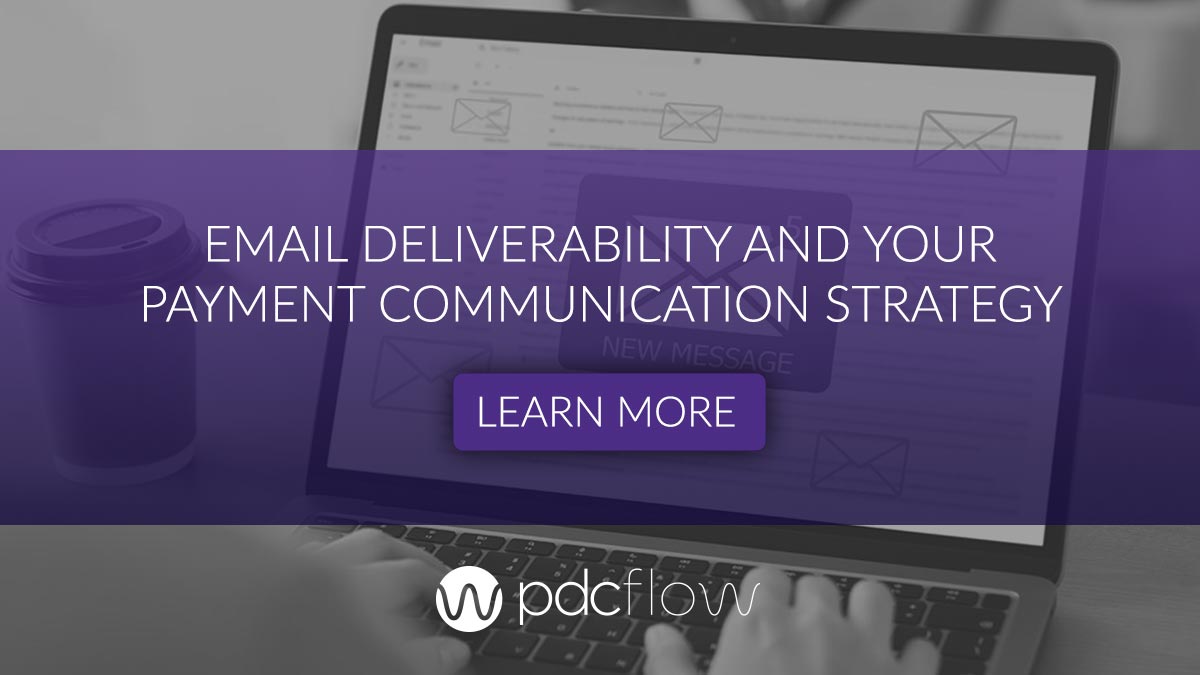Email for debt collection is more popular than ever and there are good reasons why. A thoughtful debt collection email strategy:
- Makes right party contact faster and easier
- Drives more traffic to self-serve channels, freeing up employees to do other work
- Saves money on operating costs by reducing postage costs
- Gives you more visibility into consumer engagement
In an era where convenience and privacy are paramount, email offers a non-intrusive, easily accessible, discreet means of communication customers prefer.
Now it’s time to take advantage of these preferences and amplify engagement. It’s time to focus on optimizing email strategies, implementation, testing and analytics.
Types of Emails for Debt Collection
Debt collectors know email serves consumers better–and many have chosen tools to make this happen. But having the software doesn’t equal success.
You need to be intentional about what types of customer interactions would benefit from email and create a solid email strategy based on these choices.
Some of the most common ways agencies are already using email for debt collection are:
- Delivering the model validation notice instantly, at a lower cost than postage
- Sending payment requests to engage hard-to-reach consumers
- Driving consumers to your portal for opt-ins, account updates or self-serve payments
Steps of a Successful Email Strategy
1) Prepare
Successful email strategies have a lot to do with experimentation. But you can’t know that your experiments are working if you don’t start with a solid base.
Before sitting down to write even a single email, management, operations and other departments need to:
- evaluate email lists, so they are clean and current
- discuss how your email campaign strategy will fit into your existing workflows
Email list scrubbing and maintenance
One of the most essential tasks for your debt collection email strategy is to make sure your contact list is accurate.
If you’re receiving email addresses from your creditor client, you might need to scrub invalid or duplicate addresses from the list.
Your email management strategies should also include a process for consent management. You need a reliable system for removing bounced, unsubscribed or other unusable contacts from the list.
How email strategies will coexist with current operations
Staff might feel threatened by the possibility of being replaced by software. But no matter how successful email collection can be, it still requires human intervention.
You will still need people to design and oversee collection email strategies, identify weak points and experiment crafting new messages.
You can also use agents who are less confident on live calls to monitor your email channel instead. They can use their expertise without the pressure telephone negotiations may bring.
2) Create email parameters
After email lists have been cleaned and your organization agrees how email will fit alongside other collection tactics, it’s time to start thinking about messages.
What action do you want the consumers to take as a result of your email strategy? What is the purpose of each communication?
You want to grab your consumer’s attention, keeping the following factors in mind:
- Compliance - make sure your messages include required disclosures, offer opt-outs and follow any other rules outlined in Regulation F.
- Frequency - Don’t send too many emails in too short of a time. Sending too many messages can be annoying, noncompliant, or viewed as harassment.
- Audience segments - Not every consumer should receive an identical message. You need to segment consumer lists: by stage of collection, level of engagement, or opt-in/opt-out status.
- Grammar/spelling - You need to establish credibility and build trust with your audience through every communication. Check your emails for grammar, spelling, or other simple errors that could undermine your brand reputation.
3) Compliance Approvals and Testing
After creating email messages and building the templates within your software, it’s time for approvals. Discuss your plans with your compliance team. Find out what you can and can not do through email.
Make sure the exact messages you plan to send are reviewed and approved by your agency’s compliance experts before consumers receive them.
Have your compliance team approve the cadences you plan on using to make sure you aren’t sending too many emails too quickly.
Once messages are approved for use they also need to be tested.
Send every email to yourself or someone else internally, so you know exactly what the consumer will see. Think critically about every aspect of the messages to make sure they are clear, convincing, and compliant.
4) Monitoring
After your agency starts to send emails, it’s time to establish performance metrics and pinpoint high performing messages.
Data can tell you which emails to work on to make them even stronger and identify messages that aren’t resonating with consumers. Keep in mind, certain emails will naturally perform better than others, depending on content.
For instance, legally required messages like a model validation notice may not be as engaging as a simple payment request to a consumer you’ve already made contact with.
Establishing your intentions for each email early on will help you decide which key metrics are most relevant to your goals.
- Open rates
- Click through rates
- Overall responses
- Bounce rates
- Opt-outs
- Channel performance

5) Changes based on data
There is a huge list of things you can do to improve email performance, from the email list segments you’re using, the time of day, message copy–even the design colors you choose or where you place graphics can have an impact on engagement.
Have a dedicated employee or email team that evaluates the data and makes changes to messages or the overall email strategy based on what they learn.
Email Strategies to Boost Engagement
What are some of the most important factors that entice a consumer to open or respond to debt collection emails?
- Subject lines
- Time of day sent
- Correct or relevant content
- Placement of important elements like the consumer’s name or your agency’s contact information
- Personalization in the subject line or message of an email
When your messages aren’t performing the way you’d like, it’s time to get creative. Think about the factors above and how you can make adjustments that will strengthen your messages.
You can use A/B testing to compare two different versions of an email. For accurate results and better understanding of what consumers are responding to, limit how many items you change during each test.
For example, send the same email text to each half of an email list, but use two separate subject lines. The email with a higher open rate will help you identify which subject line is better.
Why Use Email for Debt Collection?
Whether you’re considering consumer preferences, employee workloads, operating costs or effectiveness, email beats traditional mail in every one of these aspects.
If you still need motivation to get started, here are some reasons other debt collection agencies are already concentrating on email strategy:
- Preferred channel - more consumers than ever want to be reached by email. It is less intrusive than a call and gives consumers a fast, easy way to reach your online payment page.
- Less manual intervention - email templates can be created ahead of time so sending an email to a customer only takes seconds. Switching to email frees up agents to stop making reminder calls or RPC attempts by phone–calls which usually go ignored anyway.
- Lower cost - it is cheaper to send emails than it is to send letters through the mail. Sending validation notice emails can significantly reduce operating costs while keeping your agency compliant
- Can track open rates - when you send a letter by mail, there’s not always a way to know if your customer has received or opened it. The software you use to send emails should come with accurate reporting. Use this data to know who is opening your emails, which helps fine-tune your email strategy.
- Faster - by today’s standards, traditional mail is slow. This can impact your workflows by causing a significant delay after you send a validation notice and before you can begin collection activities as you wait for mail to be delivered. Because email is instant, you can begin regular activity much faster after sending a validation notice, as you know right away whether or not it was received.
PDCflow’s Flow Technology lets debt collection agencies send compliant, secure email messages to consumers. Combined with our secure payment tools you can speed up payment collection and reduce the amount of time and manual work it takes to collect a payment.
Our AR software integration partnerships and the low-code and drop-in components of our open APIs also make it possible to view everything in one place by making payment information accessible through a system of record.
Want to learn more about using email to encourage more payments, faster? Sign up for a demo with a PDCflow expert today.





